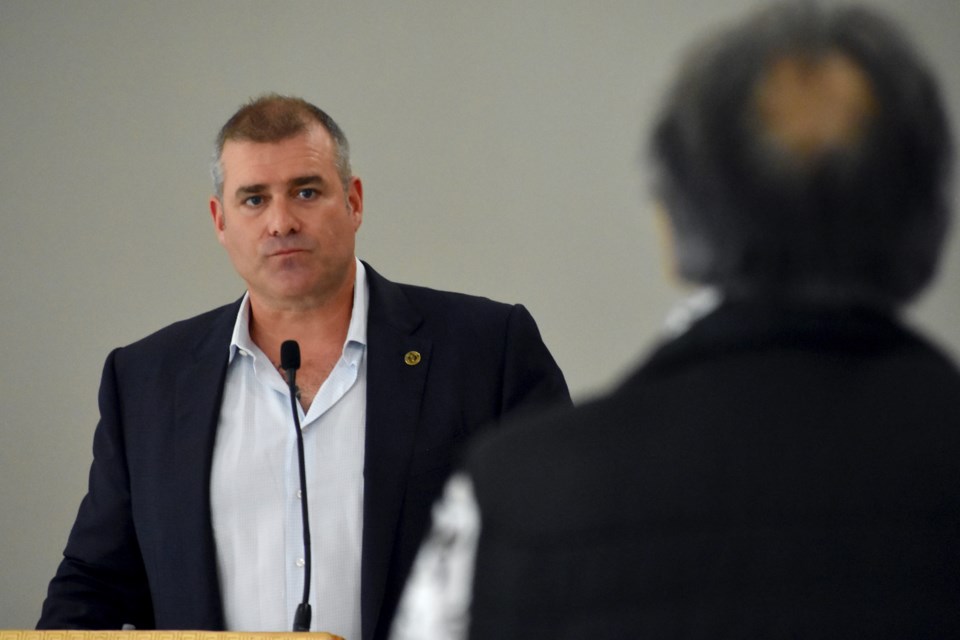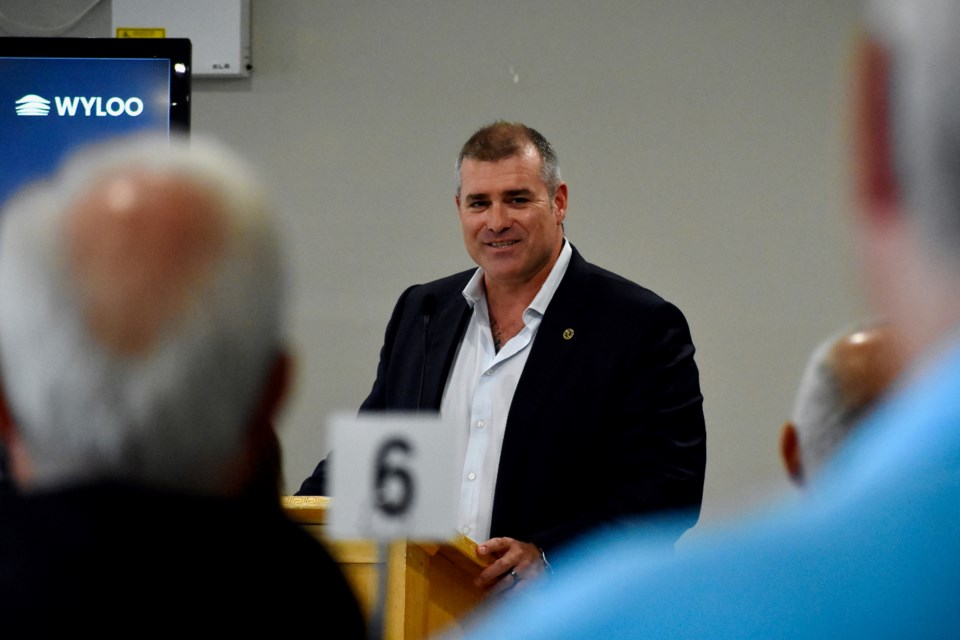TIMMINS - With a nickel mine in Ontario's Far North aiming to be in production in six years, the Timmins business community had a chance to learn more about the project.
Wyloo CEO Kristan Straub talked about the ongoing work at the proposed nickel and chromite mine in the Ring of Fire today (Oct. 3) at the Timmins Chamber's State of Mining series.
The proposed Eagle's Nest Mine is located 500 kilometres northwest of Thunder Bay in a minerally enriched area of the James Bay wetlands.
Right now, Straub said a feasibility study is underway. The last one was done in 2012, but he said there have been major project changes since then around water, where the mill and production facilities would be located, and the operating methodologies.
“There's been tremendous development in battery electric vehicle technologies. So those are all new technologies that are being incorporated into a revised feasibility study that will be completed around March 2025,” he said.
Straub sees the Ring of Fire deposit as playing a key role in Canada's critical mineral supply — particularly when it comes to their goal of developing a battery minerals processing facility to supply the chemicals and inputs for battery electric vehicles.
Wyloo is proposing building an $800-$900 million facility in Sudbury to process nickel sulphate and nickel-dominant precursor cathode active material (pCAM) — minerals needed to make the batteries used in electric vehicles.
Nickel extracted from the Eagle's Nest Mine will be transported to the Sudbury facility to be refined and purified to ship to downstream end users.
RELATED: Ring of Fire plant will bring hundreds of jobs, business opportunities to Sudbury area
Construction on the processing facility won’t begin until Eagle’s Nest is built, and work on the mine isn’t expected to start until 2027, Sudbury.com reported at the announcement of the proposed facility earlier this year.
While Wyloo has only committed to mining nickel at Eagle's Nest, Straub said the chromite deposits are larger.
“The two aren't necessarily inclusive of each other. They can be inclusive of each other. So chromite can be effectively mined from an underground environment. It can be mined safely, transported safely, can be processed safely through all of those aspects,” he said.
Doctors in Northern Ontario have publicly shared their concerns about chromite after Noront Resources, which was bought by Wyloo in 2022, named Sault Ste. Marie as the proposed location for ferrochrome processing facility.
Doctors in that city shared concerns that physicians would leave the community due to the health risks of a ferrochrome facility.
Wyloo is eying the Ring of Fire nickel project to be in production by 2030.
“That would be contingent on the road, so without visibility on when the roads start, we can only do the math from where the process is and the design work that we had done previously on the road,” Straub said.
First Nations in the area are the proponent for the road environmental assessments, and he said the company is following their leads.

Ongoing work to conserve the water and land of the James and Hudson Bay lowlands was also brought up.
The Ring of Fire is located in the world's second-largest carbon sink, which is a natural environment — in this case, the ocean and peatlands — that absorbs carbon dioxide from the atmosphere.
Mushkegowuk Council is leading the projects and made significant progress on the National Marine Conservation Area (NMCA) this year.
SEE: Mining, conservation can go hand-in-hand: director
RELATED: 'Artists can give a powerful voice': Collective helping protect land, water in Ontario's Far North
The group is waiting for the province to sign off on the project because Ontario has jurisdiction over the land.
The Eagle's Nest mine is near the water of the Winisk, Ekwan and Attawapiskat rivers, which all flow into James and Hudson Bay.
The road connecting the facility to the south will cross the Albany River that runs into James Bay.
Any possible impact to the land or water is a concern for Lawrence Martin, Mushkegowuk's land and resources director.
He said they've had progressive conversations with Wyloo to talk about how mining critical minerals and conservation can go hand-in-hand.
“We just need Ontario government to authorize the planning process and how we can all work together in moving this forward,” he said.
Having a provincial land-use planning process, said Martin, would create certainties for companies to know, for example, there wouldn't be legal action over decisions and First Nations would know the impact of projects on hunting, treaty and inherent rights.
Mushkegowuk Grand Chief Leo Friday issued a statement on Sept. 20 to urge the Premier Doug Ford to meet with their chiefs, with the aim of having the province agree to immediately protect the coast of Western James Bay and southwestern Hudson Bay, and the North French River.
SEE: 'There will be nobody ... monitoring the land': Grand chief urges Ontario to meet
The ask isn't for money, in 2022 the federal government committed $800 million to create up to four Indigenous-led conservation areas, including Mushkegowuk.
"There has been no response at all with Ontario. We keep asking. We keep moving it along. We've asked the federal government to also intervene to help us bring Ontario to the table, but nobody's been successful yet,” said Martin.
- With files from Sudbury.com



